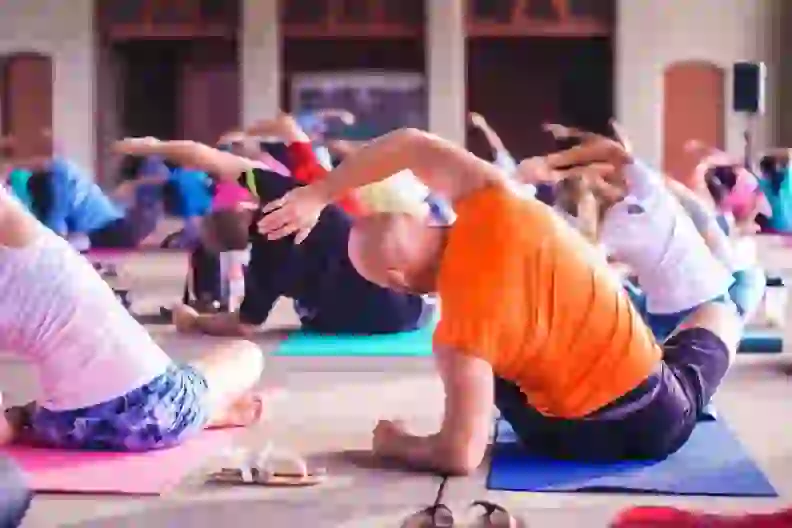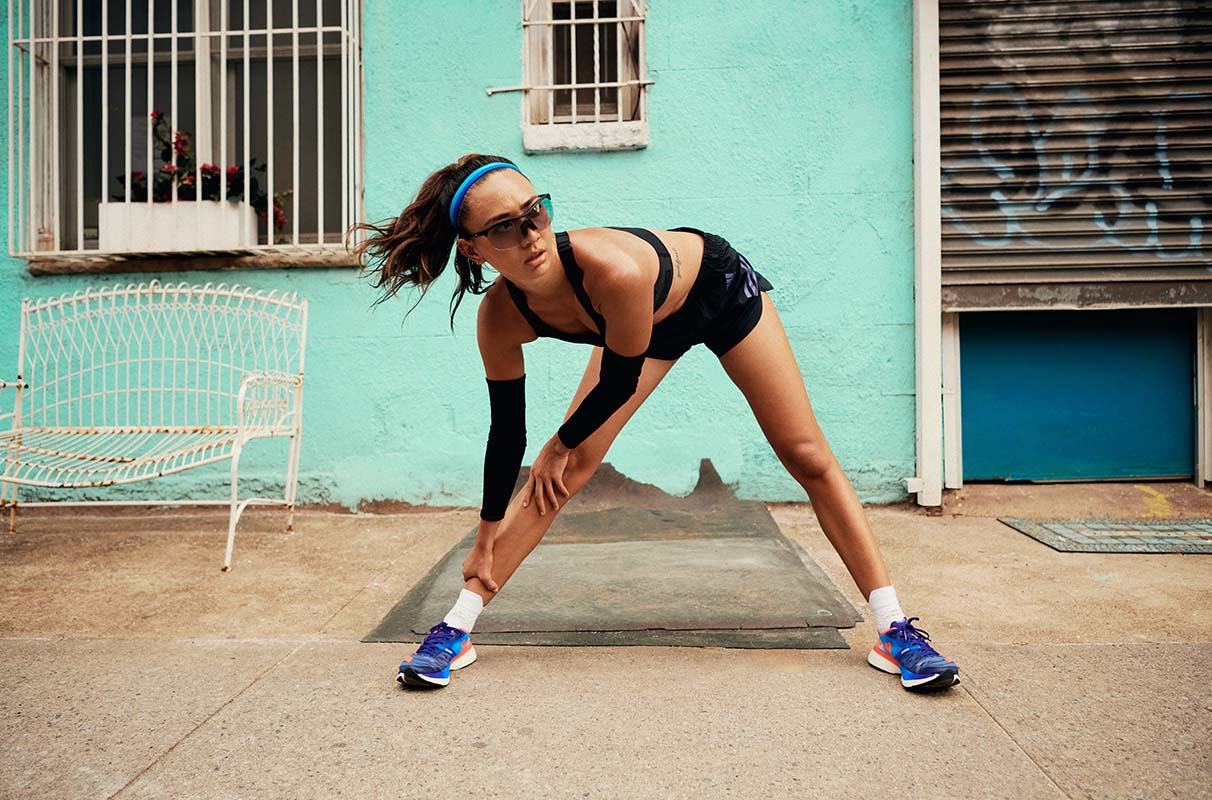Yoga is now associated with flexibility. Yoga classes will likely involve a great deal of stretching. Will we need to be flexible to do yoga?
All people can do yoga, regardless of their flexibility. Yoga is more than just stretching, so flexibility is not a requirement. Yoga comes in many forms, some more dynamic than others. Yoga can be tailored to fit different body types, so you do not have to be flexible to do it.
My yoga studio is flooded with new students who ask me if they can do yoga, even though they are not versatile. Here’s the funny part. I said the exact same thing 12 years ago, before I started practising Yoga.
After the class, I would hang out with my sister for a coffee. The next time I met her at the yoga studio, she introduced me to her teacher.
What did I say exactly?
It’s been 12 years since I first started Ashtanga Yoga. I have been to India five times to study with Sharath, my teacher. I am now a certified Ashtanga Instructor (Degree 1), and I own a yoga studio.
Was I really rigid? Let’s just say that I am more flexible, stronger and more skilled.
This has helped me to relate to my college students, and it helps me relax them after I say: You don’t need to be flexible to do yoga.
In this article, I will cover the following: A yoga physique is everybody’s physique 3 2. You must start somewhere. 4 3. Yoga is more than just stretching 5 4. Embrace your physique kind 6 5. Yoga is more than just touching your toes 6 6. Props can be used to make things more accessible 8 7. Time could be included in flexibility 9 8. Yoga is more than just flexibility
Statistics on yoga and flexibility
Before we move on to the eight reasons why you don’t have to be flexible to do yoga let’s look at some stats.
In 2016, a national study was conducted in the US titled: “Yoga in America”. The Yoga Journal and Yoga Alliance conducted this study.
Here are some of their main findings:
- 28% of people have taken a yoga class at some point in their future lives.
- 48% of respondents thought “Yoga is for versatile people”.
- 74% of respondents thought “Yoga is an exercise for the body designed to increase flexibility”.
- 61% of people who practice yoga say that they started it for the flexibility.
- 59% of people who practice yoga cite ‘Flexibility as the main reason’ for their decision.
1. A yoga physique is everybody’s physique
Yoga is often associated with young, slim, and flexible women. This could be due to the rise in social media and images that are posted there.
You can find a lot of beautiful pictures and videos of people performing yoga poses that are a little difficult on Instagram.
I didn’t say it wasn’t yoga. It’s. Yoga is a lot more than just this.
Yoga can be done by anyone, regardless of age, gender or talent.
Here are some more fascinating facts about the “Yoga in America” study:
- More than 70% of yoga practitioners in the world are women (Okay, we expected that since most students at yoga studios tend to be female).
- 51% yoga practitioners are over 40
- Only 18% of those aged 18-29 and 23% of those aged 30-39 are in the age group.
We can see from this that the majority of US yoga practitioners are 40+. An incredible 21% are yoga practitioners who are over 60 years old.
Here’s one final quote that is primarily related to Ashtanga Yoga, but could be applied to any form of yoga.
Anyone can follow. “Younger man can follow.” A man who has been around for a while can follow. A man who is very old can follow. A sick man can follow. Man without energy can follow. Besides lazy folks; lazy folks can’t follow Ashtanga yoga.”
Sri Ok. Pattabhi Jois
2. Start somewhere.
Yoga can also improve flexibility and energy, according to a growing number of studies. This means that we do not have to return to yoga when we already possess flexibility and energy. Yoga will teach us how to achieve it with dedication and time.
If you’re trying to decide what type of yoga you should try, my article: Newbies Guide To The Most Popular Types Of Yoga and Their Benefits may be helpful.
If you practice yoga even once a week, your mind will be transformed.
Yoga twice a week will transform your body.
“If you practice yoga every day, it will transform your life.”
The instructor will tailor the poses, the sequence, and the pace of the class to suit newcomers.
This means that more advanced postures can be broken down and modified so that everyone will be able to try them.
Some yoga poses can be very demanding and difficult for beginners with tight calves, hamstrings and shoulders. Give your body time to adjust and understand the poses. You’ll soon find that what used to be difficult is just another pose.
Start off by exercising and allowing your body to open.
3. Yoga is more than just stretching
You’ll be able to stretch so much more in a Yoga class.
My flexibility improved quickly after I began yoga. Over time, some poses became easier and more accessible. After my first yoga class almost a decade ago, I am more flexible than I was when I started. So, a common question is whether yoga is just stretching.
The majority of yoga courses include a good deal of stretching. This means that you’ll notice a gradual improvement in your flexibility. Yoga can provide many benefits, but this is just a fraction of them.
Yoga is India’s gift to the world. Yoga poses and flexibility were not the main focus of yoga in India’s historic past. It’s a far cry from the truth! Instead, yoga practitioners focused on other practices such as increasing spiritual power using breathing strategies and mental focus.
Yoga has become more popular and Westernized. It’s true that it focuses a great deal on the physical aspect of things, but it is not its only benefit.
Here are all the components of a ‘full-length’ yoga class.
- Stretching
- Strengthening
- Respiration
- Gaze/Focus
- Philosophy
Check out my article for more information: Is Yoga Just Stretching?
4. Embrace your physique kind
There are many different body types. According to WebMd, the human physique can be classified into three different types (somatotypes).
- Ectomorph– This type has a smaller body, thinner bones and smaller joints. (Assume a ballerina).
- Endomorph– This type has more muscle and fat, as well as a larger bone structure (consider an American soccer player).
- Mesomorph– This type has a strong, athletic build and low body fat (think sprinter).
All of us have one of these three types of bodies. Should I point out that none are “yoga our body”? They’re our bodies, if they do follow yoga.
You may look thin as an ectomorph but you might not have enough energy to do a headstand. Endomorphs may also have a problem with flexibility, but they can do headstand after their first yoga class.
We all come to yoga with a body that we were born with. A part of yoga is to accept and be at peace with it.
It might be more helpful to think of yoga as a lifestyle, or a journey, rather than just a series of yoga poses.
All of this preparation comes down to:
A good teacher, perseverance, and following the rules are all things that you can do to learn.
Flexibility and power will come with time. Be patient and embrace your body’s natural abilities. You will be able to do more as time goes on.
5. Yoga is more than just touching your toes
Here are some quotes that will help you with this level.
Yoga is not about touching your feet. “Yoga is about releasing your ideas about what you want, where you think you will go, and how you’ll get there.”
Cyndi Lee
Yoga is not about improving yourself, but about accepting yourself.
Gurmukh Kaur Khalsa
The success of Yoga is not in how well we can perform postures, but rather the positive changes it makes to our lives and relationships.
T.Ok.V. Desikachar
“Physique is not stiff; thoughts are stiff.”
Sri Ok. Pattabhi Jois
You should now be able to see that flexibility is one of the final aspects of yoga. It is a way of thinking, a way of life. It helps us to listen to our bodies and to work with the resources we have.
6. Accessible issues can be made accessible by using props
Yoga mats are the most important piece of gear for practicing yoga. There are many yoga props that can make your yoga practice more accessible. Some props are designed to reduce stress during savasana (e.g. The blanket and attention pillow are two examples. Others can help you learn yoga poses in an accessible, and perhaps artistic way (yoga straps and blocks).
- Blanket– Use this to cover up during savasana. This will help you to relax at the end of your practice. It can also be placed below your knees if you find your knees to be too sensitive.
- Yoga Blocks– These can be placed below the shoulder blades to create a gentle and beautiful chest opener. These blocks can also be used for side stretches when we cannot reach the floor. Instead, place your palm on the block to benefit from the stretch.
- Yoga Strap – Yoga straps can be useful when we have restricted hamstring flexibility, as they act as an extension to the arms. If you’re unable to touch your toes when folding forward, wrap the strap around your foot and hold onto it instead.
- Bolster – My college students love utilizing yoga bolsters. You can experience a wonderful chest opener by lying on bolsters lengthways. It’s perfect for anyone who spends their day in front of a computer display.
Some teachers like to use props, while others prefer to teach a more minimal class. You can be your own instructor if you practice at home. Use them to your advantage and really tap into the issues you may be struggling with.
7. Flexible time could be included in flexibility
Those who have never practiced yoga may find that they are restricted in their flexibility. It’s normal!
Our bodies need time to open and regulate. It’s important to be patient with the practice that is helping you find some flexibility where there was probably none earlier than.
Yoga is a great way to increase flexibility.
A study was conducted to determine the effects of Iyengar Yoga on hamstrings. This study was conducted in the UK, and 16 people took part in one 90-minute Iyengar Yoga class each week for six weeks.
The results were surprising. Both hamstring flexibility and lower back flexibility increased significantly. The authors found that after six weeks of taking one yoga class a week, flexibility had increased from 29.5cm up to 30.87cm.
Although this variation in flexibility may not seem to be that great, remember that you only attended one yoga class a week!
8. Yoga is more than just flexibility
Each of my yoga classes ends with an Om. Then we open our eyelids.
After each class, I find that the faces are smily and calm.
Yoga is about this. It’s not about flexibility, it’s about stretching. It is about creating a space to listen to your innermost thoughts and feelings.
Yoga is the stilling down of the mind, according to yoga philosophy. Yoga is the stilling of the mind. The waves of the ocean are nothing more than our thoughts and emotions.
Yoga helps us see life through the most clear lenses. The intention is that these lenses are not tainted with ideas of good or bad, better or worse, old or new, my or yours. We are at peace with everything and everyone when the fluctuations in our thoughts have been eliminated.
Yoga is a way to calm down the body, the breath and the senses. In the stillness that we create, it’s possible to acknowledge the unhealthy of our self-limiting and restricted identification. What remains is the true self.







